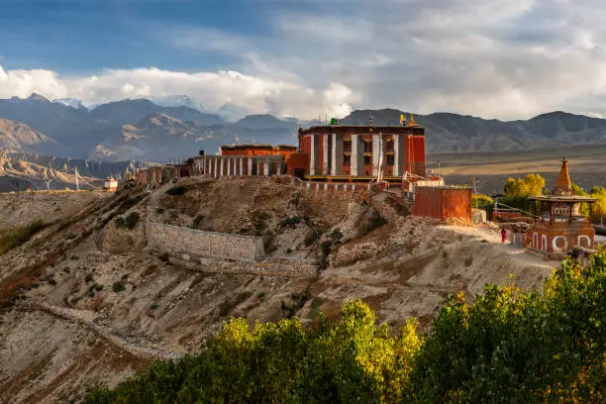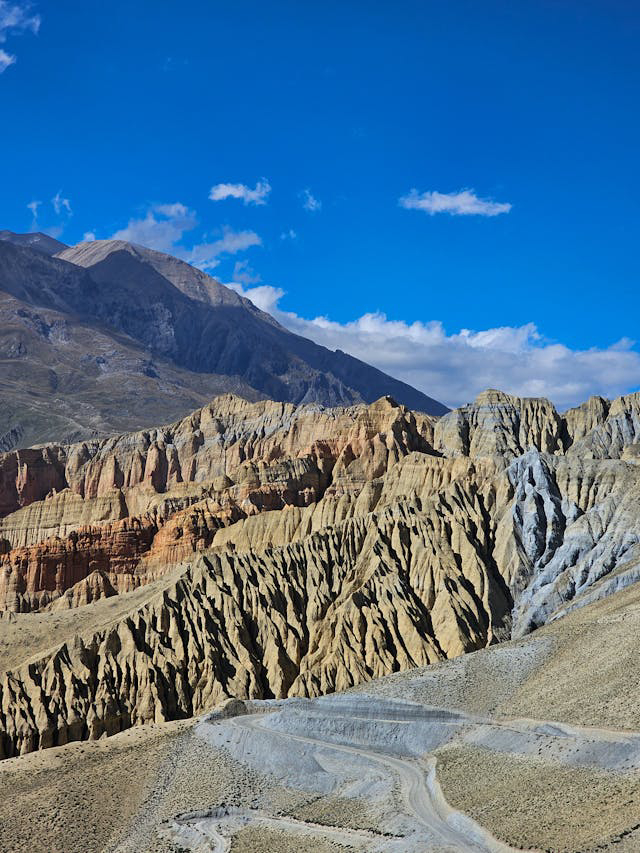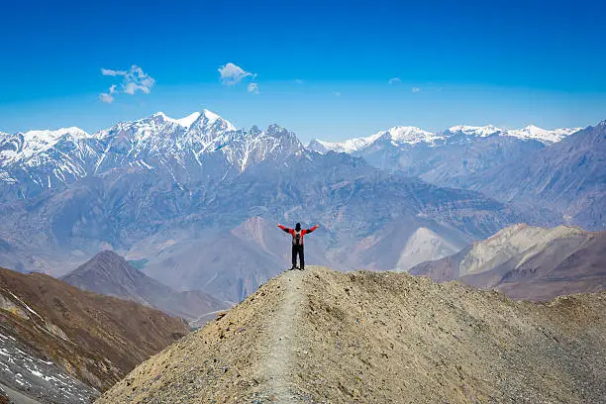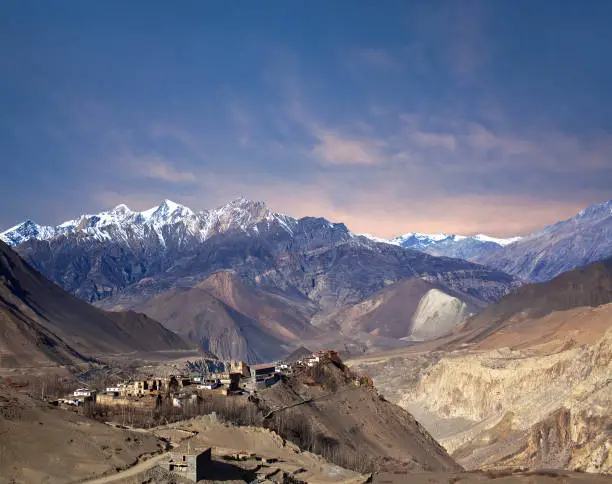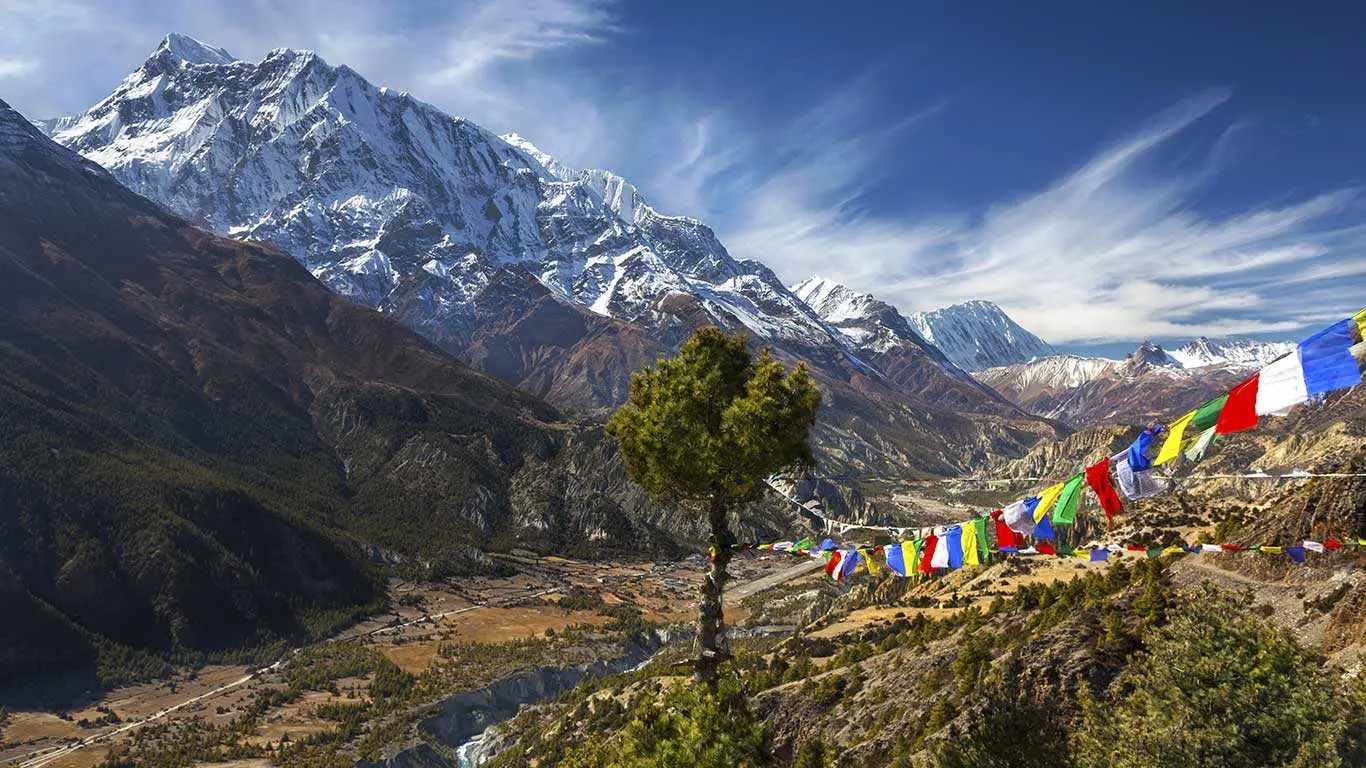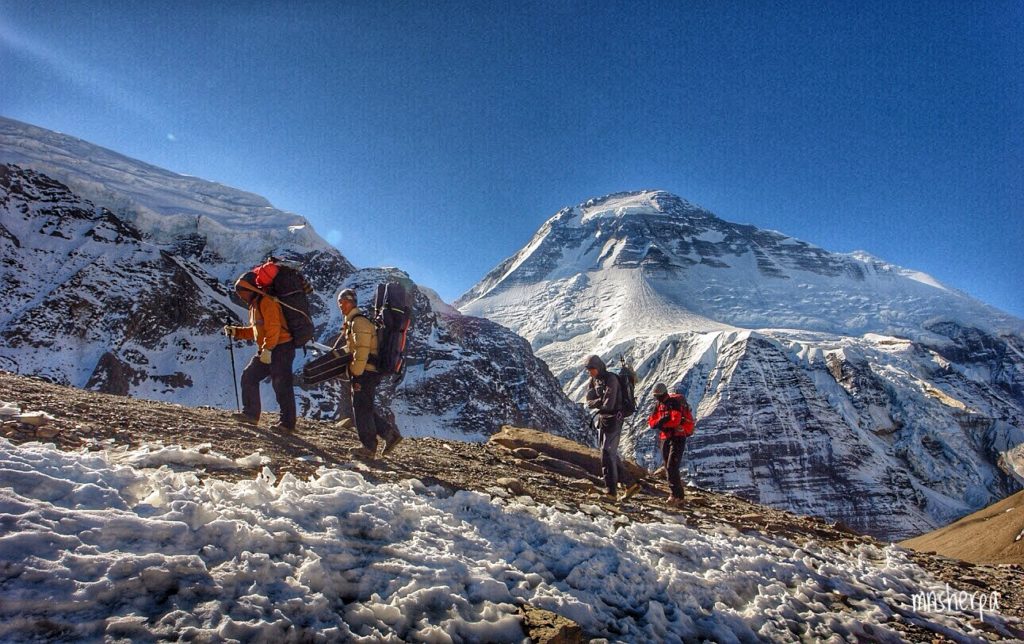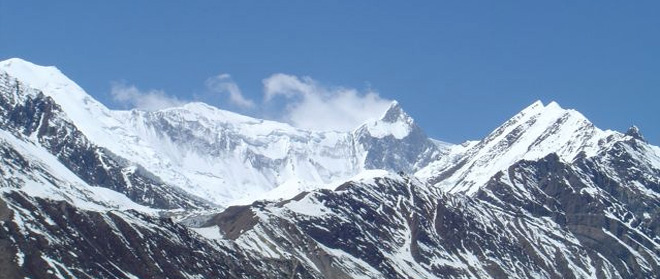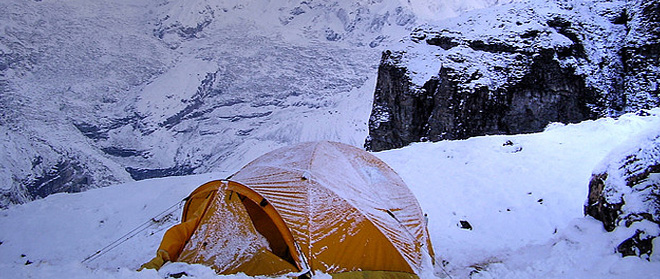Nestled in the trans-Himalayan region of north-central Nepal, the Mustang region offers one of the most captivating and culturally immersive trekking experiences in the Himalayas. Geographically and culturally distinct from the rest of Nepal, Mustang lies in the rain shadow of the Dhaulagiri and Annapurna massifs, which gives it a striking desert-like landscape, marked by arid valleys, deep canyons, colorful rock formations, and windswept plateaus.
Historically known as the Kingdom of Lo, Mustang was an independent Tibetan kingdom until the late 18th century and remained culturally and politically distinct from mainstream Nepal for centuries. This region was restricted to foreigners until 1992, earning it the title "The Last Forbidden Kingdom." The prolonged isolation helped Mustang preserve its unique Tibetan Buddhist culture, ancient monasteries, traditional lifestyles, and medieval architecture that remain largely untouched by modernity.
Upper Mustang: A Cultural and Geographical Treasure
The Upper Mustang region, accessible only through special trekking permits, is the heart of the Mustang experience. Trekking through Upper Mustang feels like stepping into a living museum of Tibetan heritage. The trail winds through remote high-altitude villages, centuries-old cave dwellings carved into cliff faces, and red-walled monasteries adorned with prayer flags and ancient murals.
One of the major highlights of this region is Lo Manthang, the ancient walled capital of Mustang. This 15th-century town is a cultural treasure trove, home to the royal palace, ancient gompas like Jampa Lhakhang and Thubchen Monastery, and a population that still practices traditional Tibetan customs. The white-washed houses, narrow alleyways, and prayer wheels scattered across the city give it a timeless charm.
The landscapes of Mustang are no less fascinating. The region showcases dramatic Himalayan vistas, including distant views of Nilgiri, Dhaulagiri, Annapurna, and Tukuche peaks, but what truly sets it apart is its earth-toned canyons, eroded cliffs, and fossil-rich hills, believed to be millions of years old. The trek passes through the Kali Gandaki River Valley, one of the deepest gorges in the world, which is also famous for Saligram (fossil) stones, revered in Hinduism.
Cultural Encounters and Festivals
Mustang is not just about natural beauty—it is a vibrant center of Tibetan Buddhist spirituality. The trek allows visitors to witness daily monastic rituals, interact with local Loba communities, and learn about their traditions and beliefs. If timed right, travelers can witness the Tiji Festival, a sacred and colorful three-day celebration in Lo Manthang, which commemorates the victory of good over evil through ancient masked dances and rituals.
Lower Mustang: Gateway to the Upper Region
The Lower Mustang region, which does not require special permits, is equally significant. Towns like Jomsom, Kagbeni, and Muktinath provide a mix of natural beauty and cultural depth. Muktinath, a revered pilgrimage site for both Hindus and Buddhists, is known for its sacred flame and 108 water spouts. The lower region also offers apple orchards, Tibetan-style settlements, and views of snowcapped peaks, making it a wonderful introduction to the Mustang experience.
Why Trek Mustang?
- A rare journey into a preserved Tibetan culture
- Striking desert terrain unlike any other in Nepal
- Remote trails through timeless villages and cave dwellings
- Access to ancient walled city of Lo Manthang
- Rich spiritual and religious atmosphere
- Fossil-laden Kali Gandaki valley
- Warm hospitality from the Loba people
Whether you’re seeking cultural immersion, high Himalayan adventure, or a walk through landscapes that feel like another planet, the Mustang Trek offers a once-in-a-lifetime experience. With its blend of history, spirituality, and stark beauty, Mustang remains one of Nepal’s most extraordinary and enigmatic trekking destinations.
Trek Facts
- Duration: 14–18 days (standard trek: 15 days)
- Max Elevation: ~3,840 meters (Lo Manthang)
- Trek Grade: Moderate to Challenging
- Region: Mustang District (Upper Mustang)
- Best Season: March–November (Ideal: Spring and Autumn)
- Permit Required: Yes (ACAP, TIMS + Special Restricted Area Permit for Upper Mustang)
- Trek Style: Tea House / Lodge Trek

